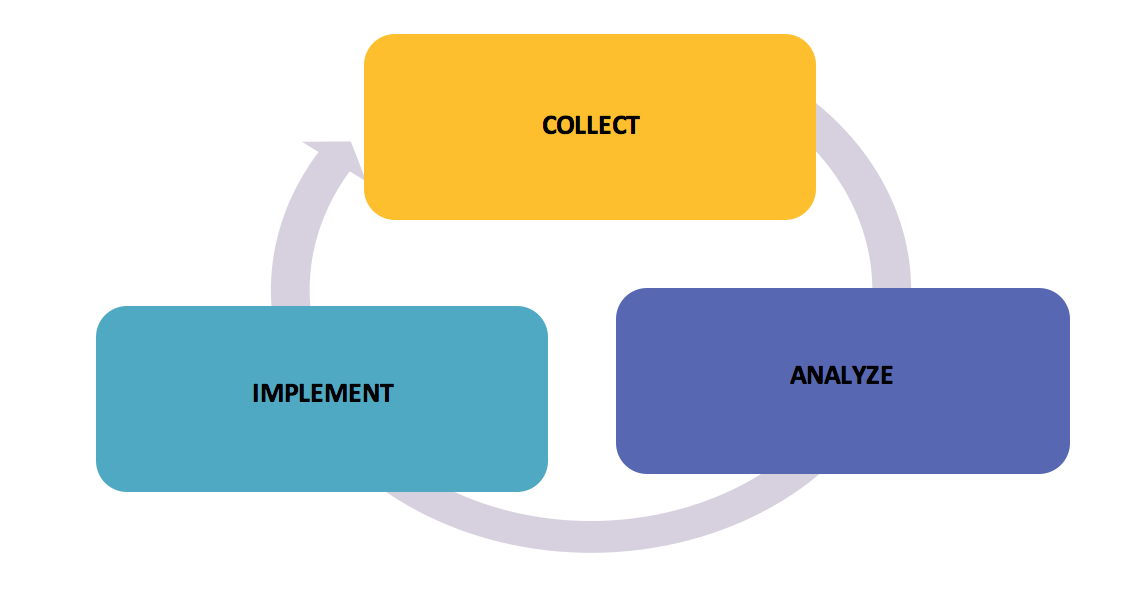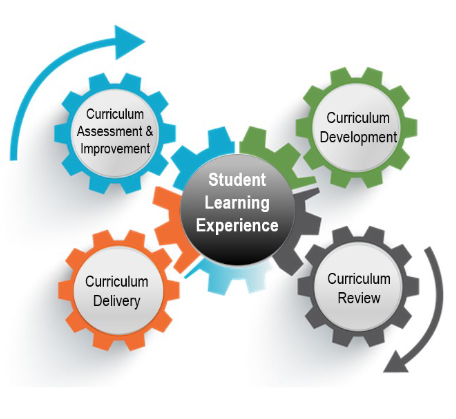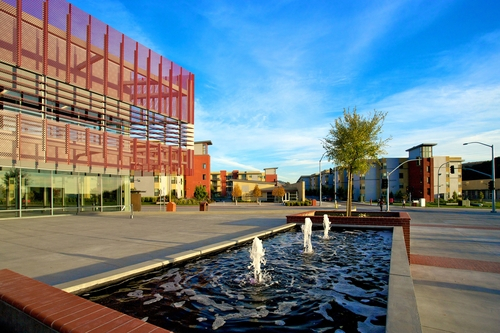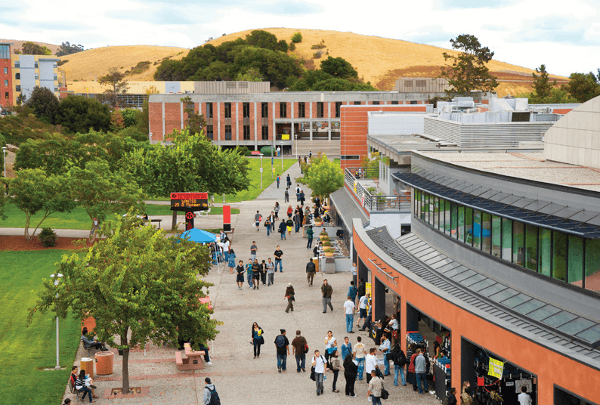Assessment
-
Assessment is the process of collecting information about student learning and the learning experience in order to analyze and implement improvements for student learning. The purpose of student learning assessment at Cal State East Bay is to continually improve the quality of our academic and co-curricular programs to ensure that students are achieving our stated outcomes.

-
What is assessment?
In education, the term assessment refers to the variety of approaches used to evaluate students' progress learning. At Cal State East Bay, we define assessment as the process of collecting information about student learning and the learning experience in order to analyze and implement improvements for student learning. The purpose is to continually improve the quality of our academic and co-curricular programs to ensure that students are achieving our learning outcomes.
Why is assessment important to Cal State East Bay?
Improving student learning and experiences on a continuous basis through assessment is one way the University demonstrates our commitment to student achievement, accountability, equity, and inclusion.
What is assessed?
Student learning outcomes are assessed at the course, program, General Education (including breadth), and Institutional learning levels for academic work.
How are assessment results used?
Results are used to improve curriculum and instruction, and overall learning experiences for our students.
How does assessment fit into students’ academic learning experiences?

Curriculum Development: Based on student learning needs, prior assessments at multiple levels, and student success data, curriculum changes are proposed by faculty committees using Curriculog, a curriculum Management System.
Curriculum Review: Once curriculum changes have been submitted using Curriculog, faculty committees evaluate course and program proposals against established standards.
Curriculum Delivery: Faculty deliver approved courses using pedagogy and learning strategies that engage students in activities and assignments that move them toward achievement of the stated learning outcomes.
Curriculum Assessment and Improvement: Curriculum is assessed through student learning outcomes at the course, program, GE, and ILO levels. The results are used to improve curriculum, instruction, and the overall learning experiences of our students.The results may also lead to developing new or changing existing curriculum.
How does assessment fit into students’ co-academic experiences?
Students learn through many experiences at Cal State East Bay both in and outside the classroom. Outside class learning experiences (also called co-curricular) include but are not limited to participation in clubs and organizations, community service, internships, on-campus employment, research and scholarship opportunities, and student leadership. Students’ experiences are assessed through program outcomes by a wide variety of approaches including performance evaluations, surveys, and focus groups. Results are used to improve the quality of the program or experience.
How is assessment support structured at Cal State East Bay?
Shown here, faculty, staff, administrators and students actively participate in assessment groups and committees at all academic and co-curricular levels. A number of these individuals serve on multiple committees, facilitating collaborative decision-making across the campus to make improvements.
How can I get involved?
If in a college, start with your Associate Dean who can point you in the direction that best fits your goal. This could include becoming more involved in Educational Effectiveness committees in your college, or joining the Committee on Academic Planning and Review (CAPR) or the Institutional Learning Outcomes Subcommittee of CAPR as part of your service. If in Student Affairs, contact your supervisor.
Where can I learn more?
Some assessment resources that may help you strengthen your understanding include reading on foundation and frameworks, a glossary of terms and definitions. Cal State East Bay Resources that could be especially helpful are Curriculum Map and Long-Term Assessment Plan templates along with a video and guide on aligning program and course learning outcomes to the student learning experience.
Helpful contacts include your Associate Dean, supervisor, the Educational Effectiveness Committee, or Office of Faculty Development.
-
Institutional Learning Outcomes (ILOs) are those learning outcomes that are expected of every graduate of the institution, both undergraduate and graduate and are closely aligned with General Education requirements. ILOs are assessed according to the 2022-2028 ILO Long Term Assessment Plan in the major and in co-curricular programs and activities with a schedule that aligns timing for undergraduate, graduate, and General Education ILO assessment. The previous 2018-2022 LO Long Term Assessment Plan followed the same framework. ILOs are also assessed in our Overlays in our Local Breadth Requirements which are approved courses in Diversity, Social Justice, and Sustainability that meet graduation requirements. ILOs are assessed by the ILO Subcommittee, a faculty committee.
-
Graduate Program assessment and reporting takes place according to the University's Committee on Academic Planning and Review policies and the 2022-2028 ILO Long Term Assessment Plan.
-
Program Learning Outcomes (PLOs) are associated with the requirements for the major. They are those outcomes that are expected of every graduate within a specific major or degree program and are focused on mastery and depth of disciplinary knowledge. Assessment of Program Learning Outcomes is the responsibility of program faculty. The results are reported annually and through a five-year review cycle to the Committee on Academic Planning and Review (CAPR).
Each academic college maintains an assessment website to demonstrate how learning outcomes are fostered in a program using curriculum maps and to show how their programs are continuously improving student learning through ongoing assessment.
College of Letters, Arts, and Social Sciences (CLASS) Assessment
College of Business and Economics (CBE) Assurance of Learning
College of Education and Allied Studies (CEAS) Assessment and Accreditation
College of Science (CSCI) Assessment
University Libraries Assessment
Both Annual Reports by Department and Five-Year Reviews by Department are posted by CAPR.
In addition to all Cal State East Bay programs undergoing academic review, several programs at Cal State East Bay also receive discipline-specific accreditation.
-
At Cal State East Bay, General Education (GE) Learning Outcomes are aligned to the Institutional Learning Outcomes and AAC&U’s LEAP Essential Learning Outcomes which express the knowledge, skills, and values CSUEB graduates are expected to attain. Collectively, the CSUEB GE learning outcomes and ILOs distinguish who we are, what we value, and how we expect students to demonstrate their learning.
Assessment of General Education Learning Outcomes is the responsibility of the General Education Assessment Committee, a subcommittee of the Committee on Academic Planning and Review (CAPR) following the GE Assessment Schedule.
-
Course Student Learning Outcomes (SLOs) are developed by faculty and assessed by the individual faculty member teaching a course. These are the knowledge, skills, and abilities expected of all students completing a course and are evaluated by the instructor as part of the regular grading process. Course Student Learning Outcomes for all courses are available in the Catalog and are included in every course syllabus as outlined in the 2022 Policy on Course Syllabus approved by the Academic Senate.
Here are examples of assessment checkpoints faculty can use in courses to improve teaching and learning.



